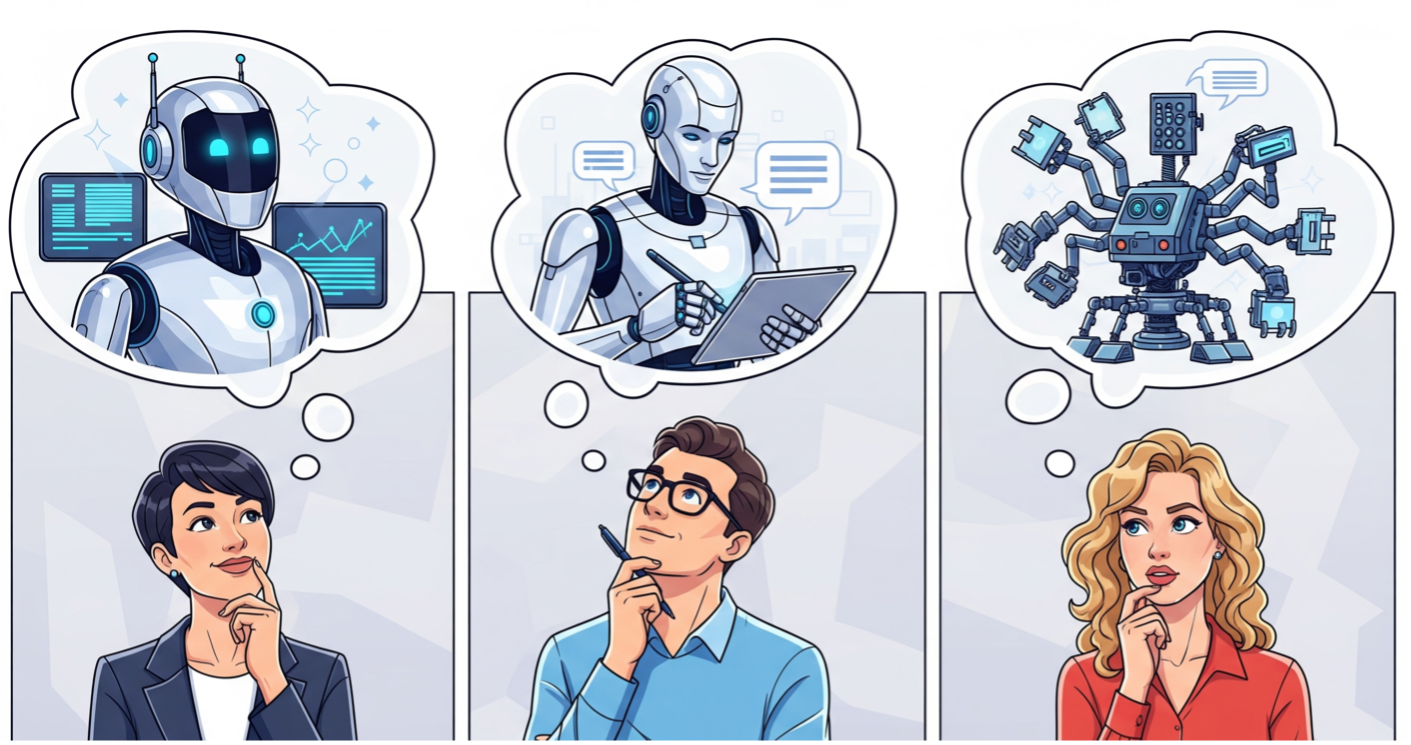This post is part of a series looking at the capabilities of generative AI for content marketing:
Embracing the New Wave: Generative AI in Content Marketing
Introduction
Welcome to the era of generative AI, where the lines between human creativity and machine efficiency are blurring more than ever. As marketers, we're always hunting for the next big thing that can catapult our strategies into the stratosphere. Generative AI, with its ability to churn out content at an astounding pace, might just be that game-changer. But hold your horses! It's not all sunshine and rainbows. Knowing when to harness this power and when to step back is crucial. Let’s dive in and explore this dynamic landscape together.
The AI Advantage in Marketing
First things first, what’s this buzz about generative AI? Simply put, it’s a type of AI that can create content – think articles, social media posts, even artwork – from scratch. It's like having a robot Picasso in your toolkit. But it’s not just about cranking out content; it’s about doing it smartly.
When AI is Your Best Friend
High-Volume Content Needs: Picture this - you’ve got a mountain of product descriptions to write. Your deadlines are glaring at you, and time is a luxury you don't have. Generative AI swoops in like a superhero, creating content at lightning speed. It’s perfect for when you need to produce a lot of material in a crunch.
Data-Driven Personalization: AI loves data. It can gobble up all the information about your audience and spit out content that speaks to them on a personal level. Tailoring emails, product recommendations, or even ads becomes a walk in the park.
Ideation on Steroids: Need a burst of ideas for your next campaign? Generative AI can be your brainstorming buddy, offering a smorgasbord of concepts and headlines. It’s like having a creative assistant who never sleeps.
But Wait, There’s a Catch
Generative AI isn’t a magic wand. There are times when its charm doesn’t work quite as well.
Deeply Human Stories: AI can juggle words, but it doesn’t truly “get” human emotions. When your campaign is all about touching hearts and evoking feelings, it’s your human touch that counts.
Brand Voice Nuances: Your brand voice is like your fingerprint – unique and distinctive. AI might struggle to capture those subtle quirks and personality traits that make your brand, well, yours.
Complex, Niche Topics: If you’re dealing with specialized content that requires in-depth knowledge, AI might not be your best bet. It’s like asking a novice to do a specialist's job
Best Practices for AI Deployment
So, how do you strike the perfect balance between AI and human creativity? It’s all about playing to each other’s strengths.
The Human-AI Tag Team
Think of AI as your initial draft maker. It lays the groundwork, and then you jump in to add the finesse – the emotional depth, the brand-specific nuances, and the expert touch. This duo can work wonders!
Stay in the Ethical Lane
With great power comes great responsibility. Using AI means being mindful of ethical considerations like plagiarism and transparency. It’s about creating responsibly and honestly.
Keep AI in the Loop
Just like any skill, AI gets better with practice. Keep feeding it fresh, relevant data. The more it learns, the more accurately it can reflect current trends and audience preferences.
Wrapping Up Part One
Generative AI in marketing is like a double-edged sword. It offers incredible opportunities but requires careful handling. Understanding when to leverage its strengths and when to rely on good old human intuition is key. In Part Two, we’ll dive deeper into the practical applications, ethical considerations, and how to seamlessly integrate AI into your marketing mix.
Part Two will further explore the practical applications of AI in different marketing scenarios, delve into the ethical landscape surrounding AI-generated content, and provide insights on seamlessly blending AI capabilities with human creativity to create impactful marketing campaigns.
Ethical AI Use: A Marketer's Responsibility
Using AI responsibly is non-negotiable. It's not just about legal compliance; it's about building trust with your audience.
Avoiding Plagiarism: Always ensure that AI-generated content is original. Regular checks and balances are essential to avoid unintentional plagiarism.
Transparency is Key: Be upfront about using AI. Consumers value honesty, and being transparent about AI use can actually enhance your brand's credibility.
Data Privacy Matters: In an age where data is gold, respecting user privacy is paramount. Ensure that your AI tools comply with data protection regulations and ethical standards.
Integrating AI into Your Marketing Mix
Blending AI into your marketing strategy doesn't have to be overwhelming. It's about finding that sweet spot where AI complements human effort.
Start Small: Begin with tasks like data analysis or generating basic content. As you grow more comfortable, gradually increase AI's role in your strategy.
Continuous Learning and Adaptation: Stay updated on the latest AI developments and continually train your AI tools with new data and feedback. This ensures that your AI remains effective and relevant.
Collaborative Creativity: Encourage a culture where AI and human creativity collaborate. Use AI-generated insights and suggestions as a springboard for human-led creative endeavors.
Looking Ahead: The Future of AI in Marketing
The future of marketing is a fusion of AI efficiency and human creativity. As AI technology evolves, we can expect more sophisticated applications in content creation, customer engagement, and data analysis. The key to success will be in how well marketers can adapt to this changing landscape, leveraging AI's capabilities while staying true to the human essence of their brand.
Final Thoughts
Generative AI is not just a tool; it's a partner in the creative process. Its potential in content marketing is vast, but it requires a balanced approach, ethical use, and a deep understanding of its capabilities and limitations. By blending AI's power with human creativity and insight, marketers can craft strategies that are not only efficient and data-driven but also resonant and deeply human.
This concludes our two-part dive into the world of generative AI in marketing. We've explored how to effectively and ethically integrate AI into marketing strategies, ensuring a harmonious blend of technology and human creativity. As we move forward, this balance will be key to crafting impactful, engaging, and successful marketing campaigns in the AI era.
How Ascribe can help
What you just read (or skimmed) is generative AI's attempt at producing a white paper. We find it wanting (see part 3 of this series for our analysis).
Looking for a better result? At Ascribe, we’re known for producing high-quality original content. Whether we’re writing or editing, our end goal is the same: to create engaging and readable content that delivers the right message in the right way for each client. And we can do the same for AI-generated content. We can do line-by-line editing for mechanics and fact checking, a stylistic update to ensure your brand is well represented, or a complete overhaul if the text isn’t quite what you had in mind.
To learn more about how we can help meet your needs for great content, contact us today.
 Back
Back
 Annual reports
Annual reports
 Blogs and articles
Blogs and articles
 Brand messaging and taglines
Brand messaging and taglines
 Content and editorial planning
Content and editorial planning
 Copyediting and proofreading
Copyediting and proofreading
 Event coverage and reporting
Event coverage and reporting
 Marketing campaigns
Marketing campaigns
 Presentations and speeches
Presentations and speeches
 Video scripts
Video scripts
 Web content
Web content
 White papers
White papers
 7 min read
7 min read
 Articles
Articles







